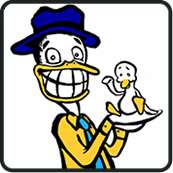- The form of a poem is a prescribed pattern, often involving the meter, structure, rhyme scheme and tone of a poem.
- The basic unit of form is the stanza, the series of lines that follow the form before it starts over again. So think of a stanza in poetry as like each new verse or chorus of a song. Often, a new stanza is preceded by a blank line. Even if you're not familiar with the form of the poem you're reading, a pattern will still most likely become evident as you read along.
- Certain forms of poetry have become associated with particular subject matter, and so, for example, an earlier poet like Shakespeare might use the sonnet in its conventional role as a love poem.
- Modern free verse poetry (without regular meter) is also written in open form, meaning that the form may vary throughout the poem.
Here's a chart below of some common forms.
NameLines Per StanzaDescription Couplet Two Each stanza is a rhyming pair of lines Triplet, tercets Three Triplets have three rhymed lines, while tercets have only two Quatrain Four The commonest form in poetry, often thought of as A-B-A-B structure Sesten, sestina Six Sestets may form part of a longer sonnet or sestina Rhyme royal Seven Named for James I of Scotland, who composed in that form (and got to name it, 'cuz he was the King) Ottava Rima Eight Now usually reserved for comic poetry Spenserian stanza Nine Named for the author of the Faerie Queen Sonnet Fourteen Commonly used in love poetry Villanelle Nineteen A particularly tricky form, with a complex rhyme schemeSoYouWanna know more? Check out our full-length article SYW interpret a poem?

